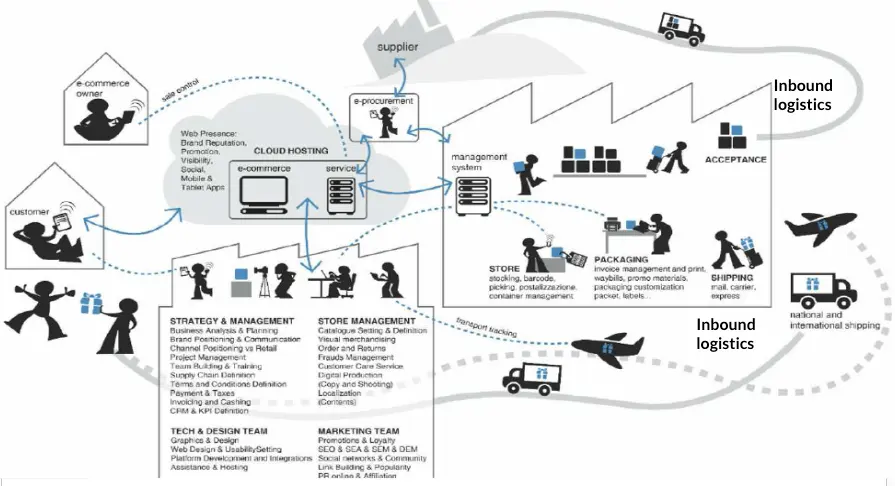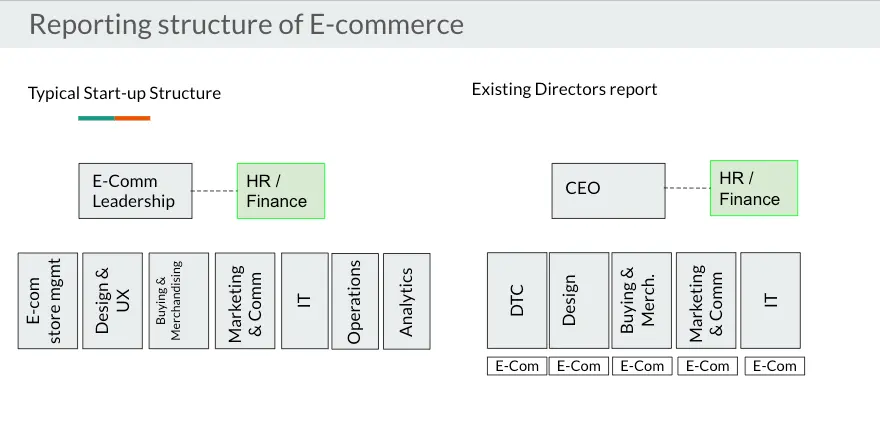Ecommerce team organisation
E-commerce Team Organization: Building a Synergistic Structure
A well-organized e-commerce team is more than just a collection of individuals; it’s a synergistic unit working towards shared goals. Effective team organization ensures clarity, efficiency, and adaptability.

- Defining Roles and Responsibilities:
- Clearly defined roles prevent overlap and ensure accountability. This involves creating detailed job descriptions that outline specific tasks, responsibilities, and performance metrics.
- Common roles include:
- E-commerce Manager: Oversees the entire e-commerce operation, sets strategic goals, and manages the budget.
- Digital Marketing Specialist: Manages SEO, PPC, social media, email marketing, and content marketing.
- Merchandising/Product Manager: Responsible for product selection, inventory management, and online presentation.
- Web Developer/Designer: Maintains and optimizes the e-commerce platform, ensuring a seamless user experience.
- Customer Service Representative: Handles customer inquiries, resolves issues, and provides support.
- Logistics/Operations Manager: Manages order fulfillment, shipping, and returns.
- Data Analyst: Tracks and analyzes key performance indicators (KPIs) to optimize performance.
- Content Creator/Photographer: Creates the visual and written content that is displayed on the website.
- Team Structure:
- The team structure should align with the business’s size, goals, and resources.
- Small businesses may have team members with multiple responsibilities, while larger enterprises may have specialized departments.
- Consider a matrix structure, where team members report to multiple managers based on projects or functions.
- Communication and Collaboration:
- Effective communication is essential for team success.
- Implement regular team meetings, project management tools, and communication platforms to facilitate collaboration.
- Foster a culture of open communication and feedback.
- Training and Development:
- The e-commerce landscape is constantly evolving, so continuous training and development are crucial.
- Provide opportunities for team members to learn new skills, stay up-to-date with industry trends, and enhance their expertise.
- Digital fashion and ecommerce are fast paced, so training is essential.
- Performance Measurement and Optimization:
- Establish clear KPIs to track team performance and identify areas for improvement.
- Regularly review performance data and provide feedback to team members.
- Use data-driven insights to optimize team processes and improve efficiency.
- Scalability:
- When organizing the team, have in mind future growth. Create a structure that can be scaled up as the business expands.
By prioritizing clear roles, effective communication, and continuous development, businesses can build a high-performing e-commerce team that drives growth and success.
In the world of fashion ecommerce roles, blending creativity with strategy is key to achieving success. Every online brand owes its allure to a team of dedicated individuals, each playing a crucial role in shaping its brand’s digital presence.

So, what roles typically make up a fashion ecommerce team? How do they contribute value, and what skills do they bring to the table? Let’s delve into six essential roles and their responsibilities.
What are the typical roles in a fashion ecommerce team? How do they add value? What are the core skills of typical fashion ecommerce roles? And how do they work together?
Before you start, always bear in mind that these roles can vary depending on the context of the project and there may be more or less roles depending on the type of organisation that you work in.
1. Head of Ecommerce
This visionary leader sets the strategic direction for the brand’s online presence. They define goals and revenue targets, foster innovation, and drive collaboration across teams to ensure sustainable growth and a competitive edge. With a keen eye on market trends and consumer behaviour, the Head of Ecommerce navigates the brand towards sustainable growth and competitive advantage.
2. Fashion Ecommerce Manager
As the engine of digital operations, this role oversees sales, marketing, and customer engagement efforts. From curating product assortments and pricing strategies to optimizing conversion funnels and analyzing performance metrics, they blend creativity with data-driven decisions to enhance the online shopping experience and boost revenue. In other words, by aligning digital strategies with brand identity, Fashion Ecommerce Managers elevate the online shopping experience and drive sustainable revenue growth.
Explore the key insights from our Finance for Fashion Ecommerce lesson.
3. Online Store Manager
Responsible for maintaining the digital storefront, the Online Store Manager ensures a seamless and visually captivating online shopping journey. They manage inventory, oversee launches, and optimise user interfaces to enhance conversion rates and customer loyalty. This role marries technical expertise with aesthetic finesse.
Explore the key insights from our Online Store Management lesson by our partners Filoblu.
4. Buyer
Serving as the brand’s curator, the buyer selects merchandise that resonates with the target audience. They leverage market insights to source products, negotiate terms, and drive sales while maintaining the brand’s identity. From establishing vendor relationships to negotiating pricing and terms, this role balances artistic vision with commercial viability to drive sales and maintain competitive advantage.
5. Visual Merchandiser
Transforming digital storefronts into immersive experiences, visual merchandisers craft compelling visuals and design campaigns that inspire purchase intent. By aligning aesthetics with user experience and elevating brand storytelling , they create memorable touchpoints that connect with consumers.
6. Customer Service
The frontline ambassadors of the brand, this team ensures customer satisfaction by addressing inquiries, managing orders, and resolving issues with empathy and efficiency. Their dedication builds trust and fosters loyalty in the digital landscape.

Conclusion
In the dynamic world of fashion ecommerce, collaboration, passion, and innovation drive success. Mastery of these roles empowers professionals to propel brands to new heights of digital excellence.
Whether you’re leading strategic initiatives or enhancing digital touchpoints, exploring comprehensive courses in Fashion Ecommerce and Digital Fashion Management can set you on the path to transformative success. Embark on your journey today!
Stay in the loop!
Stay ahead with our latest courses and free training opportunities! Sign up for our newsletter to never miss an update. Plus, for the latest digital and ecommerce fashion insights from our community, follow us on LinkedIn.